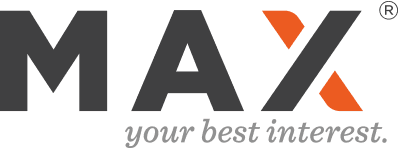
In the weeks since the sudden collapse of Silicon Valley Bank, other banks, brokers and fintechs have scrambled to roll out increased FDIC insurance solutions to capitalize on the opportunity to attract new deposits. Unfortunately, in the mad rush to roll out something, anything, they are exposing your clients to the very same risks that they should be seeking to avoid.
The collapse of SVB was scary for depositors for two reasons.
First, when a bank fails, any deposits in excess of $250,000 — the Federal Deposit Insurance Corp. limit — leave depositors unsecured, which means they may not get all of their money back.
Second, when a bank fails, even insured deposits can’t be withdrawn until the FDIC takes over the operations of the bank or orchestrates a sale.
If you think about why clients hold cash, it’s for safety and liquidity. Any solution that puts either safety or liquidity at risk would defeat the purpose of holding cash. That’s why we created MaxMyInterest.com and MaxForAdvisors.com, to create a better, safer, more liquid, and higher-yielding way for clients to manage cash.
The Problem With Sweep Accounts
For decades, banks and brokerage firms have used sweep accounts (known in the industry as brokered deposits) to earn a spread for themselves on client cash. While these solutions are marketed to clients as a means of keeping cash safe by obtaining increased deposit insurance, if you peek under the hood, you’ll find that they expose clients to safety and liquidity risks and are rife with conflicts of interest.
To identify these risks, it’s first helpful to understand how these sweep programs work. Essentially, an originating institution — could be a bank, brokerage firm, or fintech company — tells you they can provide increased FDIC insurance by spreading (selling) your cash across their network of other banks. That may sound okay on paper, but the reality is that your cash gets swept up into omnibus accounts held in the bank’s name, not in the client’s name.
This means that if the originating institution were to fail, your clients would lose access to all their funds until the resolution process is complete. In the case of a bank, that may happen in a matter of days, but if a fintech has custody of a client’s funds and they fail, clients may be stuck waiting through a bankruptcy process. Just ask anyone who thought their funds were safe at FTX.
If a client needed that cash to buy equities when the market dips, too bad. And if they needed the money to make a tax payment or close on the purchase of a house, they may be out of luck, with dire consequences. Clients can’t contact the underlying banks that hold their funds, since they have no relationship with them.
Furthermore, they don’t know to whom their deposits were sold, and if they happened to be placed with a bank where clients already hold other deposits, they may overlap and exceed the FDIC limits. This means that clients might not be fully insured, even when you thought they were.
Avoiding Unnecessary Risk
These risks are avoidable. In fact, the main beneficiary of clients taking on these risks is the very institution that is brokering their deposits, since in the process of selling deposits out to other banks, they keep a spread for themselves, passing along a net rate to the customer while hiding the embedded fee or spread that they’re keeping. In short, there’s a conflict of interest that leaves the depositor with less yield and more risk than had they just opened more bank accounts directly in their own name.
In 2009, in the midst of the Financial Crisis, I identified these risks and began managing my own cash differently, spreading it out across my own accounts held directly at multiple banks, so that I’d have the benefit of increased FDIC insurance coverage while maintaining full visibility, liquidity, and control over my cash, with no single point of failure. When I found that my safer approach had also generated tens of thousands of dollars of incremental yield, I figured that many more people could benefit from this same approach, and we created MaxMyInterest in 2013 to create a new, safer, higher-yielding way to manage cash.
It Pays to Read the Fine Print
Not 48 hours after the collapse of SVB, many advisors, banks and fintechs began repeating the same mistakes of the past. They looked for solutions that purport to keep cash safe without considering the implications of these solutions for safety and liquidity. As a fiduciary, when it comes to your clients’ cash, it pays to read the fine print. By avoiding brokered sweep accounts, you can keep cash safer, more liquid, and earn higher yields at the same time.









 nothing like a little reprise of global market volatility to remind us that stocks don’t always go up. That’s no reason to panic, of course, but sometimes it’s good to take a moment to reflect on portfolio theory and appreciate why most advisors don’t advocate a 100% allocation to equities.
nothing like a little reprise of global market volatility to remind us that stocks don’t always go up. That’s no reason to panic, of course, but sometimes it’s good to take a moment to reflect on portfolio theory and appreciate why most advisors don’t advocate a 100% allocation to equities.